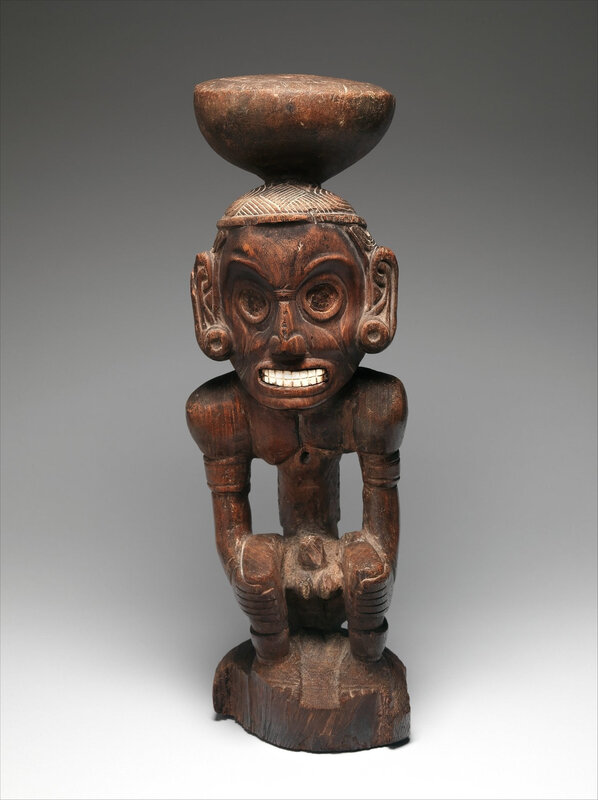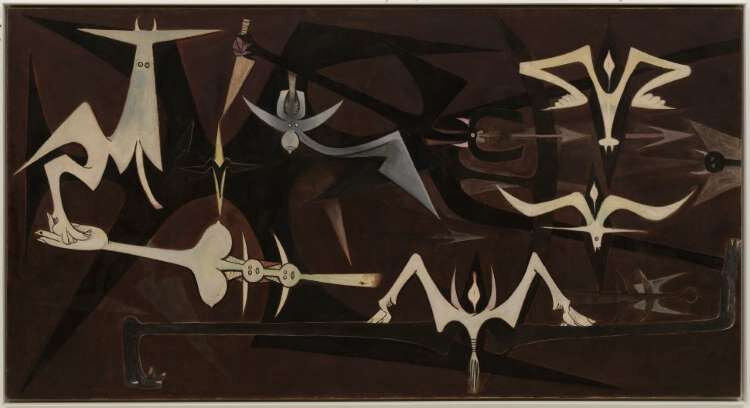Art of early Caribbean civilizations featured in Met exhibition
NEW YORK, NY.- A special exhibition highlighting the artistic achievements of early Caribbean civilizations has gone on view at The Metropolitan Museum of Art. Showcasing more than 40 works drawn primarily from The Met collection and augmented by select loans from public and private collections in the United States, Arte del mar: Artistic Exchange in the Caribbean presents a stunning narrative of creativity from the ancestral cultures that encircled the Caribbean Sea in the millennia before European colonization. The exhibition is the first to focus on the artistic exchange that took place among the Taíno civilizations of the Greater Antilles (present-day Cuba, Jamaica, Hispaniola, and Puerto Rico) and the coastal societies in countries such as Colombia, Panama, Costa Rica, and Honduras before the 16th century. Highlights include rarely seen sculptures created in ancient Puerto Rico.
"Early Caribbean civilizations developed a rich cultural legacy that was fueled by the interplay of ideas and influences across the region," said Max Hollein, the Director of The Met. "This exhibition celebrates the artistic traditions of these ancestral communities while honoring the enduring power of the objects."
Organized into three primary sections focused on ritual knowledge, ceremonial performance, and political power, Arte del mar (art of/from the sea) highlights the sculptural achievements of the diverse island societies known today as the Taínos. Featured works on view include four rare wooden sculptures, such as the 10th- to 11th-century Deity Figure (Zemí) from The Met collection, a masterpiece that intertwines spirituality, ceremony, and politics. Another spectacular wooden figure from the 14th century, on loan from the Saint Louis Art Museum, illustrates how special trees inspired sculptors to reveal specific deity or ancestor forms in collaboration with leaders and ritual specialists. An exceptional group of three-pointed stones (trigonolitos), on loan from the Smithsonian Institution, National Museum of Natural History, highlights the extraordinary range of materials and imagery used by Taino sculptors to create spiritually charged ritual objects.
Deity figure (zemí), Taíno, Dominican Republic (?), ca. A.D. 1000. Guaiacum wood, shell, H. 27 in. (68.5 cm), The Metropolitan Museum of Art, New York; The Michael C. Rockefeller Memorial Collection, Bequest of Nelson A. Rockefeller, 1979. Photo: Courtesy of The Metropolitan Museum of Art.
Seat or platter (duho), Taíno, Dominican Republic, 14th–15th century. Wood, H. 7 3/8 in. (18.7 cm). Saint Louis Art Museum; Purchase, Friends Fund and Primitive Art Society Fund in honor of Morton D. May. Photo: Courtesy of Saint Louis Art Museum.
Alongside works of art created by their better-known Taíno peers, the exhibition presents objects created by the artists of the Tairona in northern Colombia, the diverse kingdoms in the Isthmus of Panama and Costa Rica, and the networks of sculptor communities in the Ulúa Valley, Honduras. Objects created from luxury materials including greenstone, shell, gold, and marble underscore the range of trade connections between Caribbean peoples. In a fourth section, the exhibition explores the ancestral legacies into the 20th century and today by incorporating Rumblings of the Earth (Rumor de la tierra), 1950, by painter Wifredo Lam (Cuban, 1902–1982), on loan from the Solomon R. Guggenheim Museum.
In conjunction with the exhibition, the Museum will offer a variety of educational programs in 2020, including an Artists on Artworks event, a lecture, Conversations With a Curator (bilingual in English and Spanish), Teen Career Lab, and a Family Afternoon (for families with children ages 3–11).
Heart-Shaped Bottle with Phallic Spout, Taíno, Dominican Republic, 11th–15th century. Ceramic, H. 19 1/2 × W. 17 × D. 8 in. (49.5 × 43.2 × 20.3 cm), The Metropolitan Museum of Art, New York; Promised Gift of Brian and Florence Mahony. Photo: Courtesy of The Metropolitan Museum of Art.
Wifredo Lam (Cuban, Sagua La Grande 1902–1982 Paris), Rumblings of the Earth (Rumor de la tierra), 1950.
Oil on canvas. Framed: H. 63 3/8 in. × W. 9 ft. 8 in. × D. 3 in., 152 lb. (161 × 294.6 × 7.6 cm, 68.9 kg), Solomon R. Guggenheim Museum, New York Gift, Mr. and Mrs. Joseph Cantor, 1958. Photo: Courtesy of The Solomon R. Guggenheim Museum, New York.

/https%3A%2F%2Fprofilepics.canalblog.com%2Fprofilepics%2F1%2F0%2F100183.jpg)
/https%3A%2F%2Fstorage.canalblog.com%2F03%2F02%2F119589%2F96711876_o.jpg)
/https%3A%2F%2Fstorage.canalblog.com%2F11%2F31%2F119589%2F94773502_o.jpg)
/https%3A%2F%2Fstorage.canalblog.com%2F20%2F83%2F119589%2F94772815_o.jpg)
/https%3A%2F%2Fstorage.canalblog.com%2F26%2F72%2F119589%2F75604929_o.jpg)
/https%3A%2F%2Fstorage.canalblog.com%2F59%2F60%2F119589%2F26458628_o.jpg)







/http%3A%2F%2Fstorage.canalblog.com%2F95%2F36%2F119589%2F127146553_o.jpg)
/image%2F1371349%2F20240425%2Fob_c453b7_439605604-1657274835042529-47869416345.jpg)
/image%2F1371349%2F20240425%2Fob_59c6f0_440358655-1657722021664477-71089985267.jpg)
/image%2F1371349%2F20240425%2Fob_07a28e_440353390-1657720444997968-29046181244.jpg)